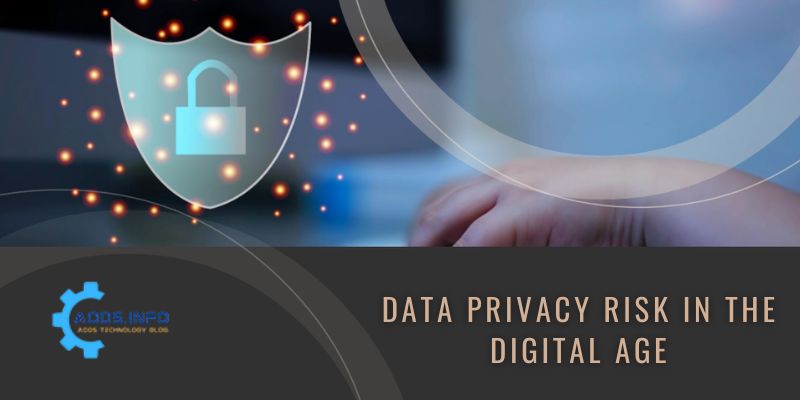In our increasingly digitized world, the pervasive collection, processing, and storage of personal information raise significant concerns about data privacy risk. As technology continues to advance, so do the threats and vulnerabilities associated with the protection of sensitive data. Organizations and individuals alike must be vigilant in addressing these challenges to ensure the integrity, confidentiality, and availability of personal information. In this article, Aods will delve into the multifaceted landscape of data privacy risk, examining common threats and proposing strategies to mitigate potential pitfalls.
Contents
- 1 Unauthorized Access: A Pervasive Data Privacy Risk
- 2 Data Breaches: A Harrowing Consequence of Inadequate Protection
- 3 Insider Threats: The Enemy Within
- 4 Third-Party Risks: Navigating the Perils of Outsourcing
- 5 Data Profiling and Tracking: Balancing Personalization and Privacy
- 6 Lack of Consent: A Fundamental Privacy Violation
- 7 Data Retention Policies: Striking the Right Balance
- 8 Cross-Border Data Transfer: Navigating Regulatory Complexities
- 9 Inadequate Data Governance: A Recipe for Privacy Risks
- 10 Conclusion: Nurturing a Culture of Privacy in the Digital Era
Unauthorized Access: A Pervasive Data Privacy Risk
At the heart of data privacy risk lies the omnipresent threat of unauthorized access. Whether through sophisticated hacking techniques, phishing attacks, or other cyber intrusions, malevolent actors seek to exploit vulnerabilities in systems to gain access to sensitive information. These breaches not only jeopardize the privacy of individuals but also expose organizations to significant financial and reputational repercussions.
Organizations must prioritize robust cybersecurity measures to safeguard against unauthorized access. Implementing strong encryption protocols, enforcing stringent access controls, and regularly auditing security infrastructure are essential steps in mitigating this prevalent data privacy risk. Continuous monitoring and prompt response to potential security incidents can further fortify defenses against unauthorized access.
Data Breaches: A Harrowing Consequence of Inadequate Protection
One of the most alarming manifestations of data privacy risk is a data breach. Occurring when sensitive information is accessed, disclosed, or stolen without authorization, a data breach can have profound consequences for both organizations and individuals. Financial losses, damage to reputation, and legal ramifications are just a few of the potential fallout from a breach.
To mitigate the risk of data breaches, organizations must adopt a proactive approach. This involves conducting regular security audits, implementing advanced intrusion detection systems, and ensuring that sensitive data is stored and transmitted using robust encryption methods. Additionally, developing and rehearsing an incident response plan can minimize the impact of a potential breach and facilitate a swift and coordinated response.
Insider Threats: The Enemy Within
While external threats often take center stage, organizations must not overlook the significant risk posed by insider threats. Employees or individuals with privileged access may intentionally or unintentionally compromise data privacy. This can range from careless mishandling of sensitive information to malicious activities aimed at exploiting vulnerabilities from within.
Mitigating insider threats requires a combination of technological and organizational measures. Implementing user activity monitoring, conducting regular employee training on data privacy best practices, and enforcing the principle of least privilege are crucial steps. Organizations must also foster a culture of awareness and accountability to minimize the risk of insider threats and ensure that employees understand the importance of safeguarding sensitive data.
Third-Party Risks: Navigating the Perils of Outsourcing
In an era of interconnected services, many organizations rely on third-party vendors for various aspects of their operations. However, outsourcing data processing or storage introduces additional layers of complexity and risk. If these vendors lack robust security measures, the data they handle becomes susceptible to compromise.
To mitigate third-party risks, organizations must conduct thorough due diligence when selecting vendors. This includes evaluating their security protocols, compliance with data protection regulations, and track record in handling sensitive information. Establishing clear contractual agreements that outline data protection responsibilities is essential, along with regular audits to ensure ongoing compliance.
Data Profiling and Tracking: Balancing Personalization and Privacy
The era of big data has enabled organizations to create detailed profiles of individuals for targeted advertising and personalized services. While this can enhance user experience, it also raises concerns about the erosion of privacy. The delicate balance between data-driven personalization and preserving individual privacy underscores the complexity of data privacy risk in the digital age.
Organizations must be transparent about their data collection and profiling practices, obtaining explicit consent from individuals before using their information for targeted purposes. Implementing robust anonymization techniques and ensuring that data is used for legitimate and ethical purposes can help strike the right balance between personalization and privacy.
Lack of Consent: A Fundamental Privacy Violation
Central to the principles of data privacy is the concept of informed consent. Data collected without proper consent not only violates privacy but also exposes organizations to legal and regulatory consequences. Individuals have the right to know how their data will be used and to make informed decisions about its collection and processing.
Organizations must prioritize obtaining explicit and informed consent from individuals before collecting their data. Clear and concise privacy policies, easily accessible to users, can help build trust and ensure compliance with data protection regulations. Transparency in data practices is paramount to fostering a relationship of trust between organizations and their users.
Data Retention Policies: Striking the Right Balance
While collecting and retaining data is integral to many business operations, organizations must strike a delicate balance to avoid unnecessary data privacy risk. Holding onto data for extended periods increases the risk of unauthorized access and misuse over time. Establishing and adhering to well-defined data retention policies is crucial for mitigating this risk.
Organizations should assess the necessity of retaining specific types of data and establish clear guidelines for data deletion when it is no longer required. Regular audits and reviews of data retention practices ensure ongoing compliance with privacy regulations and reduce the risk of holding onto unnecessary information.
Cross-Border Data Transfer: Navigating Regulatory Complexities
In our globally interconnected world, cross-border data transfer is a common practice. However, it introduces additional challenges related to varying privacy regulations in different jurisdictions. Failure to comply with these regulations can result in legal and regulatory consequences, exposing organizations to data privacy risk.
Organizations engaging in cross-border data transfer must conduct thorough assessments of the privacy regulations in each jurisdiction involved. Implementing mechanisms such as standard contractual clauses and ensuring adherence to international privacy frameworks can help navigate the complexities of cross-border data transfer while minimizing associated risks.
Inadequate Data Governance: A Recipe for Privacy Risks
Effective data governance is fundamental to mitigating data privacy risk. Poorly defined policies and procedures for managing and protecting data can contribute to vulnerabilities and privacy lapses. Establishing strong data governance practices is essential for organizations to navigate the complex landscape of data privacy.
This involves creating and enforcing clear policies on data collection, storage, and processing. Regular training for employees, continuous monitoring of data handling practices, and periodic audits of data governance processes contribute to a robust framework that minimizes data privacy risk.
Conclusion: Nurturing a Culture of Privacy in the Digital Era
In conclusion, the multifaceted nature of data privacy risk requires a holistic and proactive approach from both organizations and individuals. Unauthorized access, data breaches, insider threats, and the myriad other challenges demand constant vigilance and adaptation to evolving cybersecurity landscapes. By prioritizing robust security measures, fostering a culture of awareness, and adhering to ethical data practices, we can collectively navigate the complexities of data privacy risk and ensure a secure and privacy-respecting digital future.




